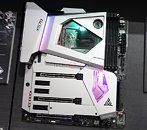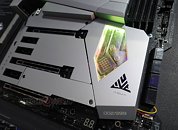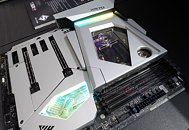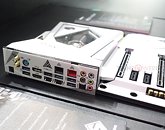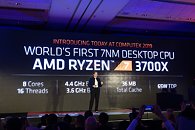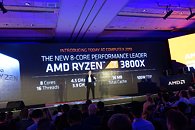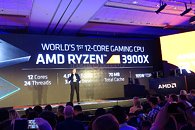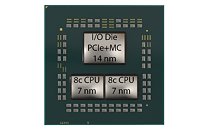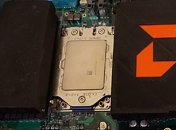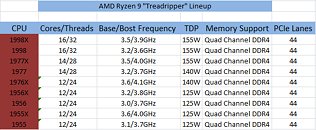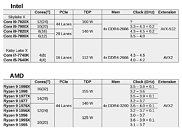
AMD Readies Ryzen 9 3950X 16-core Processor to Awestrike Crowds at E3
When AMD launched its Ryzen 9 3900X 12-core/24-thread processor at its Computex 2019 keynote, our readers commented on the notable absence of a 16-core SKU, given that a "Matisse" multi-chip module with two 8-core "Zen 2" chiplets adds up to that core-count. Some readers noted this could be a case of AMD holding back its top performing part in the absence of competition in the segment from Intel. It turns out, the company was saving this part up for an E3 2019 unveiling.
The Ryzen 9 3950X maxes out "Matisse" MCM with 16 cores, 32 threads via SMT, a staggering 64 MB of L3 cache (72 MB including the 8 MB of total L2 cache), and a stunning 105-Watt TDP figure that's unchanged from the company's TDP for the 3900X. The Ryzen 9 3950X is clocked at 3.50 GHz, with a maximum boost frequency of 4.70 GHz. The company is yet to reveal its price, but given that the $499 price-tag has already been taken by the 3900X, one could expect an even higher price. It remains to be seen if the 3950X will launch alongside the rest of the series on 7/7.
The Ryzen 9 3950X maxes out "Matisse" MCM with 16 cores, 32 threads via SMT, a staggering 64 MB of L3 cache (72 MB including the 8 MB of total L2 cache), and a stunning 105-Watt TDP figure that's unchanged from the company's TDP for the 3900X. The Ryzen 9 3950X is clocked at 3.50 GHz, with a maximum boost frequency of 4.70 GHz. The company is yet to reveal its price, but given that the $499 price-tag has already been taken by the 3900X, one could expect an even higher price. It remains to be seen if the 3950X will launch alongside the rest of the series on 7/7.


